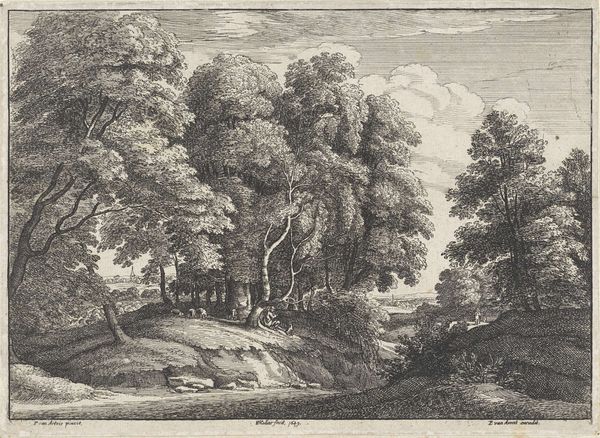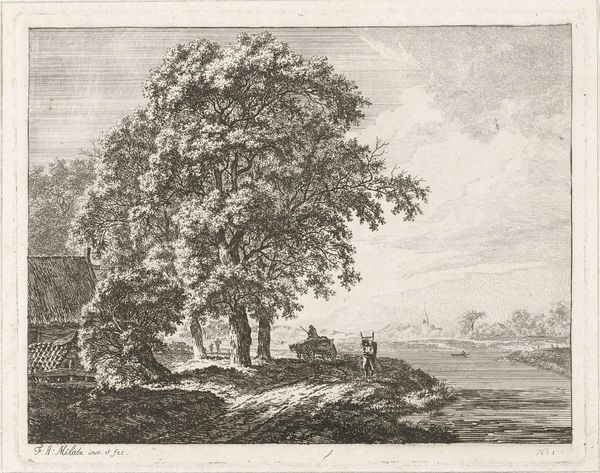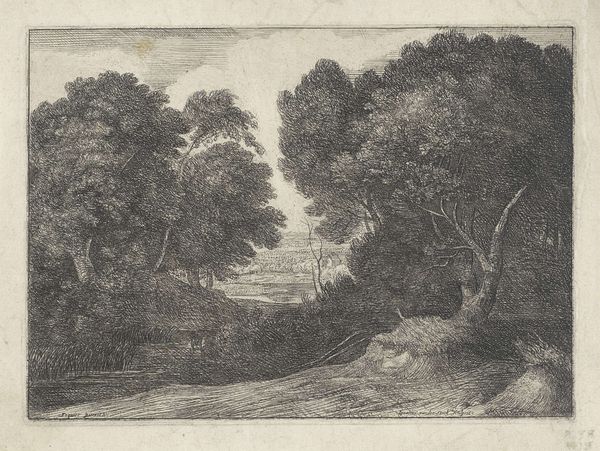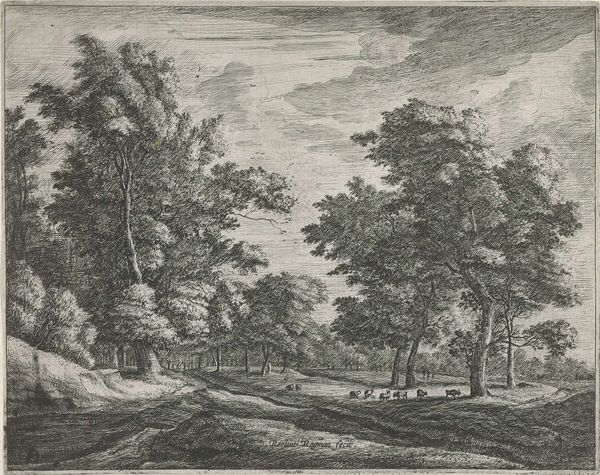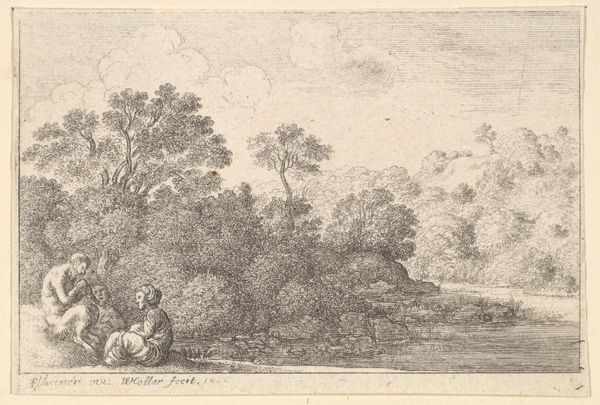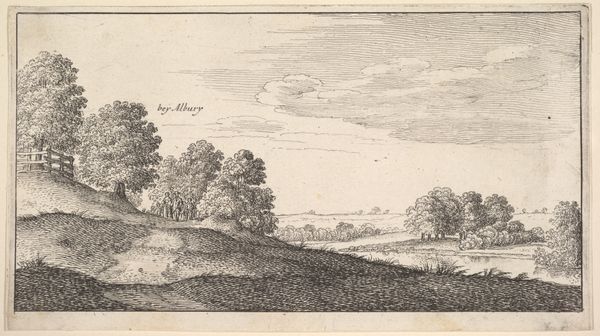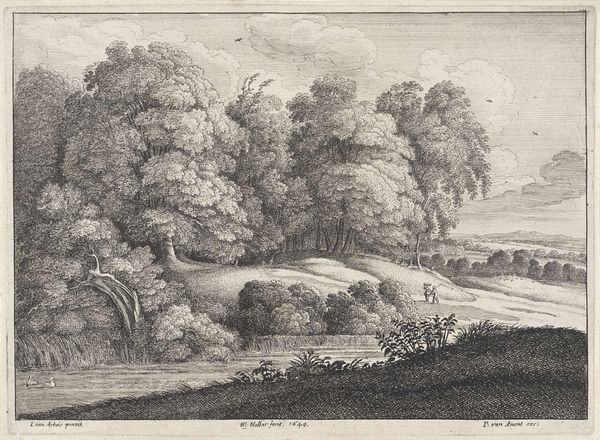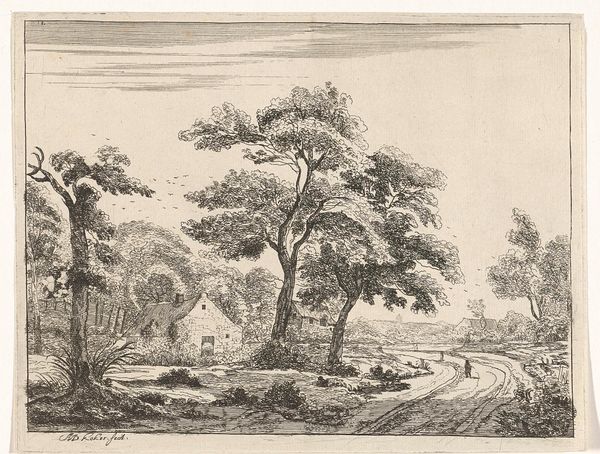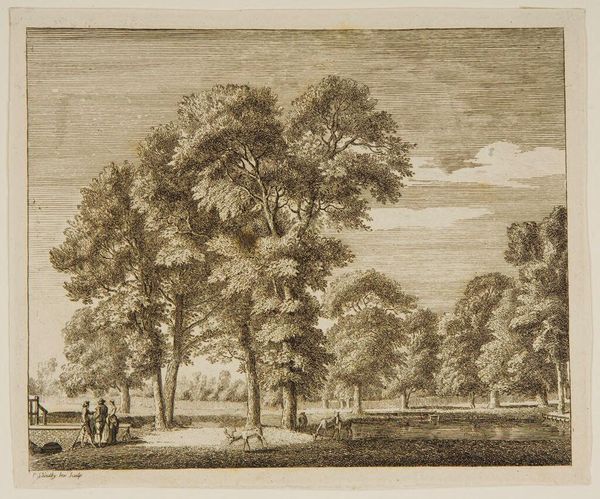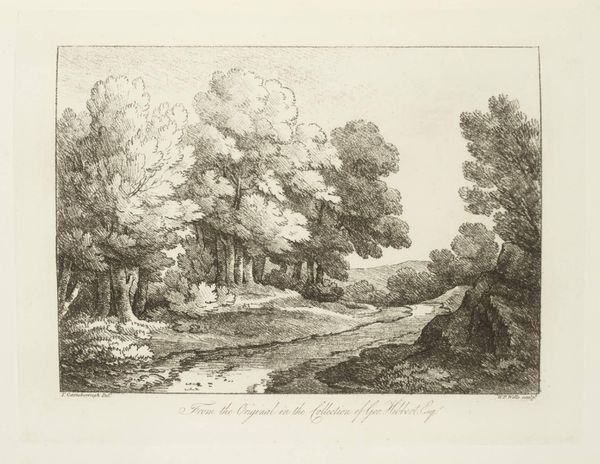
drawing, print, etching
#
drawing
#
baroque
# print
#
etching
#
landscape
#
charcoal drawing
#
pencil drawing
#
line
#
realism
Dimensions: height 149 mm, width 225 mm
Copyright: Rijks Museum: Open Domain
Curator: Wenceslaus Hollar's "Landscape with Two Walkers," made between 1652 and 1678, presents a serene, almost timeless vision of the natural world. Created as an etching, this print showcases Hollar's meticulous technique. Editor: You know, looking at this, I feel this distinct sense of calm. The rolling hills and those puffy clouds make me want to grab a walking stick and join those two little figures. It's monochrome, but still manages to be lush. Curator: Absolutely. The Baroque period witnessed a growing interest in landscape art, with prints playing a crucial role in disseminating these images to a wider audience. Hollar, with his detailed rendering, captured an idealized version of nature that reflected the socio-cultural values of the time. It provided an escapist counterpoint to urban life. Editor: That explains it! It’s a perfect advertisement for a quiet life. But, do you think Hollar ever felt trapped by the expectation to depict these serene landscapes? I mean, did he ever just want to draw something loud or chaotic? Curator: That’s an interesting question! While Hollar was a successful printmaker who adapted his style to market demands, he also lived through tumultuous times marked by the English Civil War. His landscapes, thus, can also be seen as a visual refuge—a subtle act of resistance through beauty. Editor: Oh, that’s profound. So it’s not just a pretty picture; it’s a statement? Now when I look, those walkers aren't just strolling. They’re reclaiming peace. Curator: Precisely. Consider also the function of prints during this period. As affordable multiples, they democratized art, enabling access to imagery for those excluded by patronage systems of painting. Editor: Art for the masses, that’s something. Still, there's this simple pleasure, a private sort of enjoyment one can derive. Looking closely reveals fine, deliberate linework which gives depth. Curator: And that attention to detail helped him gain widespread recognition. He fulfilled important commissions which in turn shaped how the public viewed him. Editor: Seeing that detail—knowing it connects back to such complex ideas about society makes appreciating artwork so powerful! Curator: Yes, now looking at that work, maybe that tells a very specific, a much larger tale too.
Comments
No comments
Be the first to comment and join the conversation on the ultimate creative platform.

